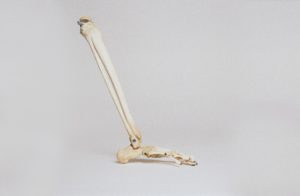Previously, the topic of healing broken bones was discussed. This week, we want to delve into it further. This blog will look into the importance of getting a fracture reduced correctly and promptly.
Recap of healing fractures:
 As a quick recap, let’s go over a few things discussed last week. A fracture is a broken bone. Whether the fracture was a result of a car accident or other circumstances, fractures require immediate medical attention rather than being put off for a day or two.
As a quick recap, let’s go over a few things discussed last week. A fracture is a broken bone. Whether the fracture was a result of a car accident or other circumstances, fractures require immediate medical attention rather than being put off for a day or two.
Prompt attention is required in order to give the bones a chance to return to their original place and position. Fractures are reduced, or set into place, by doctors. Depending on the damage done, there are two ways doctors perform a reduction.
A doctor may be capable of performing a manual reduction using their hands and tools but not penetrating the skin. Otherwise, the fracture may require an open reduction internal fixation. This means the bones will require a surgery to properly align and heal the fracture due to many bone pieces needing replacement.
After reduction, a cast may be used to keep the bones in place and safe from any more bumps or falls. Casts or braces ensure the bones are set into place following the reduction. Last week, we discussed multiple types of casts used. Take a look at last week’s blog for a refresher. The main goal of using casts is to stabilize and immobilize the bones that are healing.
Other fractures need sturdier or more invasive stabilization. This might include percutaneous pins and a frame. It may sound extremely frightening and make you queasy, but have no fear, it is only temporary and are late removed.
When physical therapy starts:
Once the bones have been reduced and stabilized, a physical therapist will enter the picture. The first visit may be as early as the hospital stay. Physical therapy more often than not continues into days to months following the hospital visit. If the leg or ankle is broken, a physical therapist may instruct the patient of the proper way to walk with an assistive device.
 An assistive device for such injuries may include a cane, crutches, or a walker. Simple tasks such as getting in and out of the car may even require a safe motion shown to you by the physical therapist. More challenging tasks such as walk longer distances or climbing stairs should also be practiced with a physical therapist.
An assistive device for such injuries may include a cane, crutches, or a walker. Simple tasks such as getting in and out of the car may even require a safe motion shown to you by the physical therapist. More challenging tasks such as walk longer distances or climbing stairs should also be practiced with a physical therapist.
Following a lower extremity fracture such as a foot, ankle, or leg injury, the doctor may recommend less body weight be placed on the area. A physical therapist will assist a patient understand weight bearing limitations. Because of the restrictions, the physical therapist will thoroughly show patients how to be mobile while still adhering to the weigh bearing restrictions. After a period of time, restrictions will begin to be lifted.
You may have seen a hundred people in your lifetime wearing a sling, but they may have worn it differently as per doctor’s orders. If a patient suffers from an arm injury, a physical therapist can instruct patients how to wear the sling properly. This includes putting on and taking off the sling.
If patients have any questions during physical therapy, that is the perfect time to ask. It is just like elementary school- there is no such thing as a dumb question. Like learning any new skill, it takes practice. Be patient and confirm with the physical therapist that you are doing the correct motions before doing exercises on your own.
Physical therapists may also take a look around your home for obstacles that may need modification. For example, following a large fracture, physical therapists may recommend staying on the first floor in a two story home. He or she may make minor adjustments to avoid putting too much pressure on the healing bones.
How physical therapy continues:
 Once bones are mostly healed or fully healed, gaining normal function usually requires further physical therapy at a clinic or in your home. This is usually after the casts are removed. The PT will evaluate the rain of motion, function, mobility, strength, and pain associated with the fracture location.
Once bones are mostly healed or fully healed, gaining normal function usually requires further physical therapy at a clinic or in your home. This is usually after the casts are removed. The PT will evaluate the rain of motion, function, mobility, strength, and pain associated with the fracture location.
It is important for the physical therapist to be aware of which type of reduction was performed. It has a large part in the way the healing process with proceed. Trust ProCare Health & Rehab Centers will the fracture healing process. Make an appointment today to regain normal function.
Thank you for reading this week’s blog and stop by next week for more!
Staff Writer



